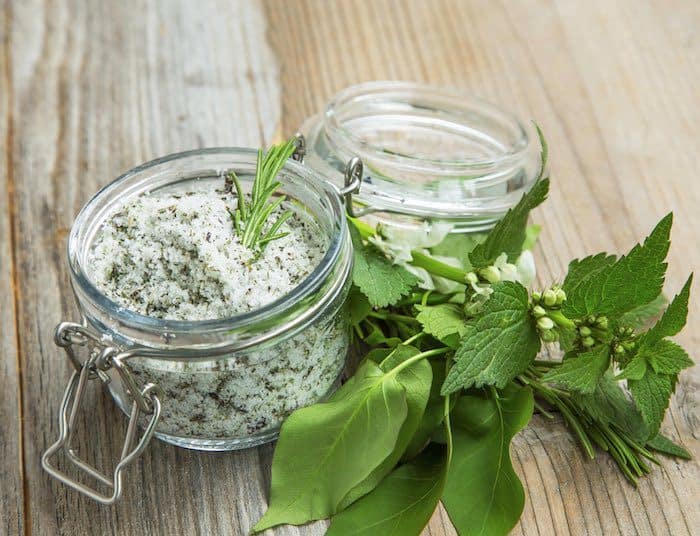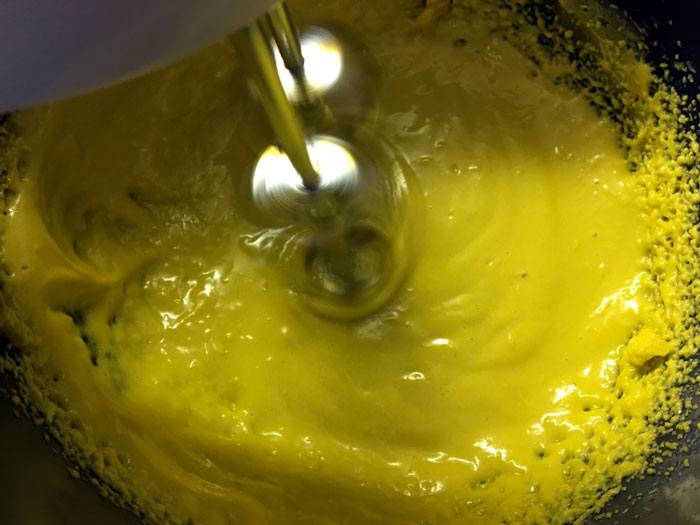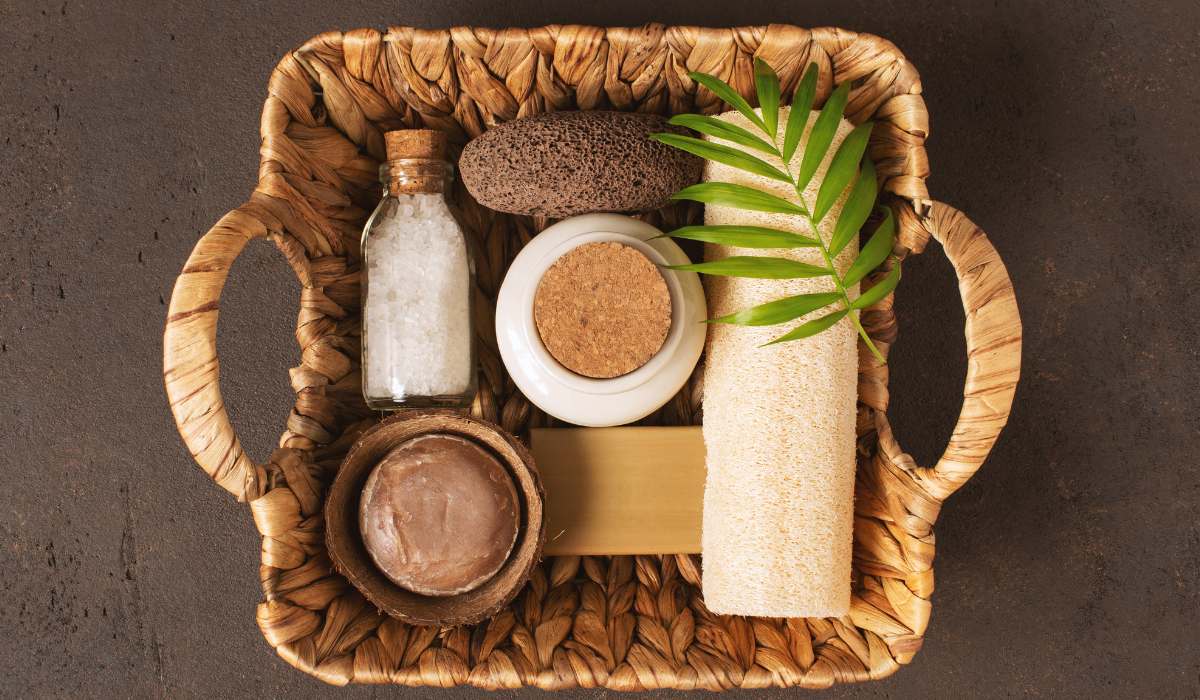Body skin care routine: your everyday GUIDE to soft, glowing skin
We tend to give our face all the attention, don’t we?
Serums, creams, treatments (sometimes layer upon layer…). But the skin on our body deserves just as much care.
It’s easy to overlook, especially when life gets busy, but I’ve found that a consistent, uncomplicated body skin care routine makes a real difference, not just in how your skin looks, but in how you feel in your body each day.
As a certified organic skincare formulator and health coach, I believe that good skin care is as much about nourishment and routine as it is about ingredients.

When it comes to the body, you don’t need a dozen steps or fancy products. What you do need is consistency, a few quality essentials, and a bit of time set aside to care for yourself.
In this article, I’ll walk you through a natural, practical body care routine that supports healthy skin from the neck down. It’s simple enough to do every day, affordable, and rooted in wellness. Just the way I like it (I hope!).
Let’s begin.
Start in the shower

Your body skin care routine begins here.
Most people rush through their shower without thinking much about it, but this is where you can set the tone for everything that follows.
A good cleanse prepares your skin, lifts off the day, and gets you into the right mindset to moisturise and care for your body properly.
Forget harsh scrubs or drying gels. You don’t need anything fancy. You just need something that works with your skin, not against it.
Keep these in mind:
• Choose a gentle body wash made with plant-based ingredients
• Avoid sulphates and anything too foamy
• If your skin feels tight afterwards, it’s too harsh
• Warm water is best – hot water can make dry skin worse
• Stay in the shower long enough to soften the skin, not so long you come out wrinkled
This is also the perfect moment to take a breath. Your shower is more than just a rinse — it’s a quiet pause in the day.
Use it.
Let the warmth relax your muscles and remind you that this routine is yours.
Exfoliate (but not every day)

Exfoliating helps your skin feel smoother, look brighter, and absorb moisture better. But more isn’t always better.
Overdoing it can leave your skin irritated, especially if you’re already dealing with dryness or sensitivity.
Once or twice a week is enough for most people.
Keep it simple:
• Use a scrub that feels gentle, not scratchy
• Focus on areas like arms, legs, elbows and back
• Always follow with moisture (your skin will need it)
You can make your own scrub at home. A few ideas:
• Sugar + olive oil = hydrating and easy
• Coffee grounds + coconut oil = invigorating
• Oatmeal + yoghurt = great for sensitive skin
Apply in the shower while your skin is damp. Move in small, circular motions, and take your time. Rinse well.
If your skin stings afterwards or feels raw, it’s too much. Listen to your skin and don’t push it. This is about support, not punishment.
Moisturise while your skin is still damp…

This step is where the magic happens. You’ve cleansed, maybe exfoliated — now it’s time to feed your skin.
And timing matters. The best moment to moisturise is just after stepping out of the shower, when your skin is still slightly damp. This helps lock in the water and gives you much softer, healthier skin with barely any effort.
You don’t need a complicated product. A few good oils or a basic butter-based balm are more than enough.
Some of my favourites:
• Jojoba oil — light, balancing, ideal for all skin types
• Sesame oil — warming and grounding, especially in cooler months
• Fractionated coconut oil — absorbs fast, won’t clog pores (don’t worry if you have never heard about it, regular coconut oil will do the job also)
• Shea butter — rich and protective, especially for dry skin
If you want to add a scent, go with essential oils, just a drop or two per tablespoon of oil is plenty. Lavender, neroli, sweet orange… whatever makes you feel good. Check my article on essential oils and safety first.
Apply using slow, upward strokes. Focus on areas that tend to dry out — elbows, knees, shins, and feet.
You don’t need to overthink it. Moisturising should feel like a small act of care, not a chore.
Keep it simple: your daily body skin care routine (easy to follow)
You don’t need ten steps. Most of the time, keeping things consistent is far more important than making things complicated.
What matters is doing something every day, even if it’s just a quick rinse, a light oil, and moving on with your day.
Here’s what that can look like:
In the morning:
• Quick shower or sponge bath
• Light moisturiser or body mist
• Natural deodorant
• SPF on exposed skin if you’re heading out
In the evening:
• Warm shower
• Exfoliate (once or twice a week, not daily)
• Nourishing body oil or balm
• Socks or pyjamas to help seal it in overnight
That’s it.
The trick is to find a rhythm that works for you, not something that feels forced or overwhelming. This is VERY IMPORTANT!
Some days you’ll do more, some less. What counts is showing up for yourself, even in small ways.
Weekly extras for glow and care

Some things you don’t need to do daily — but when you add them in once or twice a week, they really make a difference.
Not just to your skin, but to how you feel in your body.
Try a bath instead of a shower now and then.
Even a quick 15-minute soak can help soften the skin, ease tension, and make moisturising more effective.
A few simple bath ideas:
• Oats in a muslin bag — softens and soothes dry skin
• A spoon of coconut oil — adds slip and moisture
• A few drops of essential oil mixed with a vegetable oil like olive oil (2-3 drops per tablespoon) — lavender, geranium or chamomile work beautifully
Body masks are another option.
Add a body mask before your shower — just on key areas.
Think of it like spot-treating the skin. You don’t need to cover your whole body or stand around freezing.
Apply the mask to a few areas you want to care for, like arms, legs, or your back.
Wrap yourself in a towel or robe while it sets (10–15 minutes is plenty), then rinse it off in the shower.
These are smooth, easy-to-clean blends — no chunks, no scrubbing required:
• Aloe vera gel + a pinch of turmeric — calms the skin and boosts glow
• Green clay + rose water — gently tones and helps balance oil
• Olive oil + kaolin clay — softens without leaving residue
You can even treat it like a mini reset — something calming to do once a week that brings your attention back to your body. Quiet, nourishing, and easy.
These extras aren’t about being perfect. They’re about carving out small moments for yourself and building a connection with your skin — gently and without pressure.
Support your skin from the inside out

Good body care isn’t just about what you put on your skin. It’s also about what’s happening inside. The way you eat, move, sleep, and even think — it all shows up on the surface.
This doesn’t mean a perfect lifestyle. It just means paying attention and giving your body what it needs, when you can.
A few things I always come back to:
• Hydration. Water really does help, especially if your skin feels dry or sluggish. Carry a bottle with you. Sip throughout the day. Little and often.
• Food. Think nuts, seeds, avocado, leafy greens, berries. Skin responds well to unprocessed, colourful foods with healthy fats and natural antioxidants.
• Movement. Regular movement gets your blood flowing and supports skin function. You don’t need a full workout routine. A walk, some stretches, anything that helps you feel more present in your body.
• Sleep. When you sleep well, your skin repairs itself. A good night’s rest does more for your skin than any product ever will.
None of this has to be perfect.
It’s about doing what you can, in a way that feels manageable. Body care works best when it supports your whole self — not just your outer layer.
DIY natural body care: affordable products you can make at home

If you’re looking to simplify your routine and avoid unnecessary additives, making your own body care products is a great option. It’s cost-effective and allows you to tailor ingredients to your skin’s needs.
Simple DIY ideas:
- Sugar and oil scrub: Combine sugar with olive or coconut oil for a gentle exfoliant.
- Oatmeal bath soak: Blend oats into a fine powder and add to your bath to soothe dry skin.
- Whipped body butter: Mix shea butter with a carrier oil and whip until fluffy for a rich moisturizer.
These homemade products are not only affordable but also free from synthetic fragrances and preservatives, aligning with a natural approach to skincare.
Shower routine combo ideas for glowing body skin
Enhancing your shower routine can make a significant difference in your skin’s appearance and feel. Combining certain steps can maximize benefits and leave your skin radiant.
Effective combinations:
- Dry brushing before showering: Stimulates circulation and exfoliates dead skin cells.
- Gentle cleanser followed by a cool rinse: Helps maintain the skin’s natural barrier.
- Post-shower oil application: Locks in moisture when applied to damp skin.
Best body care TIPS for glowing, healthy skin (simple and effective, in case you’re wondering where to start)
If you’ve been wondering where to start, or how to keep things going without losing momentum, these are the habits I always come back to.
They’re simple, effective, and make a noticeable difference when done regularly.
Keep it simple and consistent
• A quick shower routine with warm water
• A nourishing oil or balm right after
• One or two diy treatments each week (mask, scrub or bath soak)
• Stay hydrated, eat well, sleep
Use affordable, natural products
You don’t need expensive products. You just need ones that actually suit your skin.
Stick to ingredients you understand — oils, butters, hydrosols, clays. See above some of the easy DIY recipes.
Be kind to your skin
If something burns, itches or stings, stop using it.
Glowing skin comes from basic skin care done regularly, not from harsh routines or unrealistic expectations.
Step-by-step routine at home for dry or acne-prone skin

Some of you might be dealing with dry patches or occasional body acne.
Here are a few small adjustments that I believe can really help.
For dry skin
• Avoid hot water
• Use richer oils like shea, olive or sesame
• Try layering: mist first, then oil, then balm
• Add a bath once a week with oats or plant oils
For body acne
• Avoid synthetic fragrance and heavy creams
• Use breathable clothing and wash sheets weekly
• Try a weekly clay mask on your back or chest
• Keep your routine oil light — like jojoba or sunflower
At-home routine breakdown
Morning
• Rinse or shower
• Light oil or aloe-based moisturiser
• Natural deodorant
Evening
• Warm shower with a soft cloth
• Optional scrub (1–2x/week)
• Moisturise while skin is damp
• Focus on healing and protection
Keep it consistent, not complicated
You don’t need more products.
What your body needs is simple care, done regularly, a bit of attention, a bit of time, and ingredients that actually support your skin.
Find a rhythm that suits your life. Maybe that’s a quick morning routine and something a little slower in the evening.
Maybe it’s just one intentional moment a day: applying oil after your shower, brushing off the day, letting yourself land in your own skin.
Over time, it adds up. Your skin starts to feel softer. You feel more at home in your body. And that’s the real point of all this.
Body care isn’t about perfection. It’s about presence.
If you’ve been neglecting your skin for a while, don’t overcorrect.
Just start.
Begin with what feels manageable and build from there. You don’t need to change everything overnight.
Caring for your skin is caring for yourself.
And that’s always worth doing.
Patri xx
Helpful resources
The below might help.
1. Ryosuke O, Yoshie S, Hiromi A. The association between activity levels and skin moisturising function in adults. Dermatol Reports. 2021; 13(1):8811.
2. Carville K, Leslie G, Osseiran-Moisson R, Newall N, Lewin G. The effectiveness of a twice-daily skin-moisturising regimen for reducing the incidence of skin tears. Int Wound J. 2014; 11(4):446–53.
3. Sano H, Ichioka S. Which cleansing care is better, foot bath or shower? Analysis of 236 limb ulcers. Int Wound J [Internet]. 2013 [cited 2025 May 18]; 12(5):577–80. Available from: https://www.ncbi.nlm.nih.gov/pmc/articles/PMC7950804/.
4. Hahnel E, Blume-Peytavi U, Kottner J. Associations of dry skin, skin care habits, well-being, sleep quality and itch in nursing home residents: Results of a multicentre, observational, cross-sectional study. Nurs Open. 2019; 6(4):1501–9.
5. Alsharif SH, Alqahtani SH, Alqarehi RM, Alsayed MA, Alzahrani AS, Alharthi AM, et al. Knowledge, Attitudes, and Practices Regarding Skin Care in Saudi Arabia: A Cross-Sectional, Survey-Based Study. Cureus [Internet]. [cited 2025 May 18]; 14(12):e32490. Available from: https://www.ncbi.nlm.nih.gov/pmc/articles/PMC9750230/.
6. Taha S, Taha M, Zyoud SH. Self-care methods use for acne treatment among health science students. Explor Res Clin Soc Pharm [Internet]. 2025 [cited 2025 May 18]; 18:100601. Available from: https://www.ncbi.nlm.nih.gov/pmc/articles/PMC12005327/.

